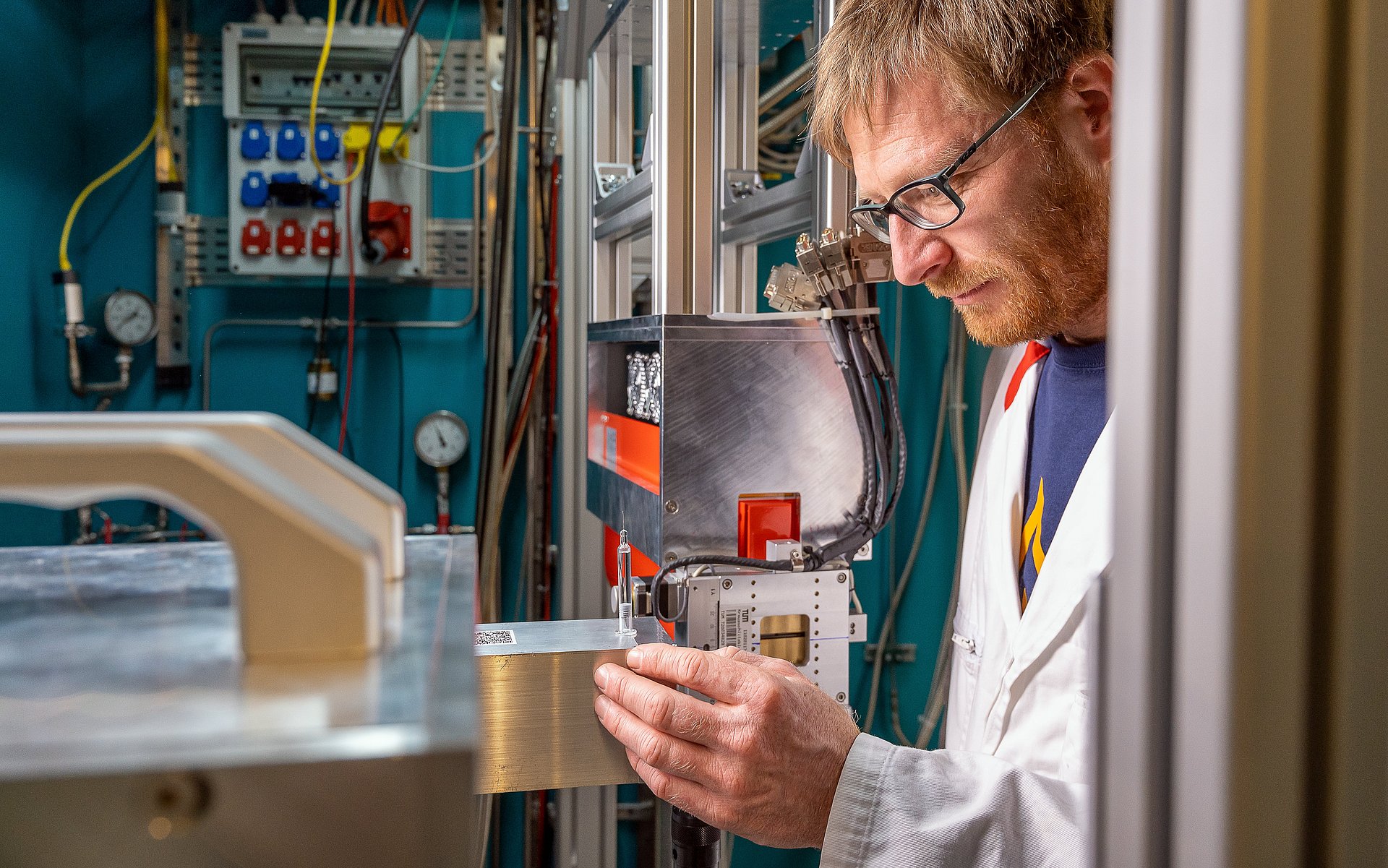Hypodermic needles investigated at FRM II
Neutrons show how pre-filled syringes clog

Pre-filled syringes are easy to use; they ensure exact dosages, so that patients can conveniently inject their own medications. These syringes have become commonplace in therapies for the widest possible variety of afflictions such as asthma, cancer and even chronic inflammatory illnesses such as Crohn's disease. But these pre-filled syringes don't always work properly: The hypodermic needles can clog when stored over longer periods of time, resulting in the injection of incorrect dosages.
Neutrons depict liquid in needle tip
"This problem is a central issue for pharmaceuticals manufacturers and approval authorities worldwide," says Prof. Stefan Scheler. He works for the technical research and development department of Swiss pharmaceuticals concern Novartis and teaches pharmaceutical technology and biopharmacy at the University of Applied Sciences Kaiserslautern.
Scheler and his colleague Dr. Alexander Zürn have created a detailed and systematic study which mathematically models the processes involved in needle clogging. This provides an improved understanding of this unwanted process. Here the researchers among other things used TUM's ANTARES cold neutron radiography and tomography facility at the Heinz Maier-Leibnitz Zentrum (MLZ) in Garching.
Good images in spite of small needle diameters
"X-ray radiation can't adequately penetrate the metal of the needle," explains Dr. Michael Schulz, who led the neutron measurements at the radiography facility for TUM. "However, neutrons penetrate the metal and reveal a clear contrast between water and air."
And that was exactly what the scientists were looking for. One important difficulty was the small interior diameter of the hypodermic needles, which is only about 0.2 mm. The ANTARES unit's detector was however capable of clearly distinguishing segments filled with air or liquid inside the needle and rendering them plainly visible.
Active ingredient solutions solidify in the needle
The pharmaceutical researchers looked at 27 differently treated pre-filled syringes: Some were subject to temperature fluctuations instead of being stored in the refrigerator according to directions. Some were also shaken and put through pressure variations to simulate transport as air-freight, and stored for varying periods of time.
"The neutron experiments have clearly shown us the conditions under which liquid enters the needle," says Scheler. Excessive pressure inside the syringe compared with ambient air pressure results in faster clogging. And longer storage periods and high temperatures also have a negative impact.
Needle clogging could become a growing challenge in the future
"Needles may end up clogging more frequently in the future," predicts Scheler: The concentration of active ingredients in the syringes is constantly being increased in order to be able to administer high active ingredient doses in small volumes subcutaneously. This results in a rising danger of needle clogging.
"We're now working to prevent that as early as in the manufacturing process," says Scheler, adding that one possibility would be modifying the filling process and creating a slight underpressure in the syringe which prevents the liquid from entering the needle during storage. Further investigations with neutrons could additionally optimize this kind of measure.
Stefan Scheler, Simon Knappke, Michael Schulz, Alexander Zuern, Needle clogging of protein solutions in prefilled syringes: A two-stage process with various determinants, European Journal of Pharmaceutics and Biopharmaceutics, Volume 176, 2022, Pages 188-198, ISSN 0939-6411
https://doi.org/10.1016/j.ejpb.2022.05.009
-
In addition to employees of Novartis Pharma AG and Sandoz GmbH, participants in the study included researchers from the University of Applied Sciences Kaiserslautern and Technical University of Munich (TUM).
Technical University of Munich
Corporate Communications Center
- Andrea Voit / S. Reiffert
- stefanie.reiffert@tum.de
- presse@tum.de
- Teamwebsite
Contacts to this article:
Dr. Michael Schulz
Technical University of Munich
Research Neutron Source Heinz Maier-Leibnitz (FRM II)
Phone: +49 89 289 14718
michael.schulz@frm2.tum.de
www.tum.de